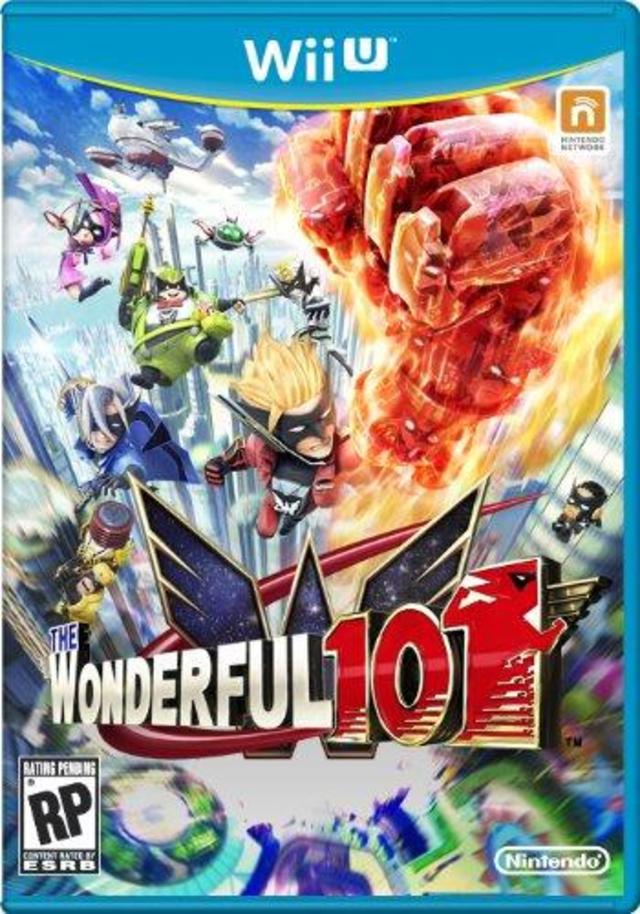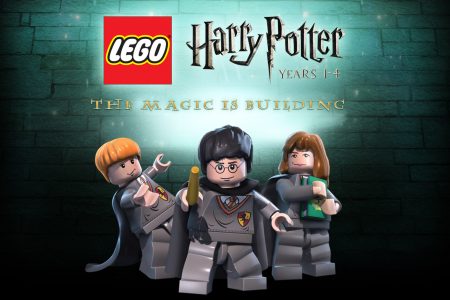Created by Platinum Games
The Wonderful 101 is a difficult game to review because it’s an original idea that makes excellent use of the Wii U but is frustrating to play initially, both in the way you move through the game with the characters and in the mechanics by which you play the game in order to progress through the levels. Couple that with an approach to the characters and cut scenes that harkens back to the cheesy dialogue and silliness of television shows like Power Rangers (designer Hideki Kamiya obviously has a deep affection for tokusatsu, the effects-heavy Japanese action serials), which you will either love because you grew up with or hate because of the use of stereotypes and endless repetition of lame gags, and you have a game that is easy to admire but hard to love.
The story of the game: Earth is under attack from evil aliens called GEATHJERK. The defenders of our planet are The Wonderful 100 (or one-double-oh, as called in the game – you, the player, are the 101st member of the team); the team is led by Wonder-Red, a primary school teacher by day until he dons his CENTINEL-suit to become a superhero wielding the Vulcan Knuckles, a giant red fist. He is joined by other heroes (who also have CENTINEL-suits): Wonder-Blue, an LA detective who wields the Vialantium Blade; Wonder-Green, a fat Frenchman who wields a lime green gun; Wonder-Pink, a female Romanian athlete who wields the Beautiful Whip. Other heroes are picked up during the game, but the vast majority of the team is made up of citizens who are ‘recruited’ (or shanghaied, depending on your interpretation) temporarily during each mission. Together, they fight the various robots and machines and weapons of the GEATHJERK to prevent their invasion.
Fighting the enemy involves Unite Morphs: using the controller to create your weapon from the small army (the ‘recruited’ citizens actually make up the weapons by combining into the shape, even being used as bullets for the guns, although they are protected from harm by the CENTINEL-suits): you can either use the right joystick or drawing on the GamePad screen with your finger – I recommend using your finger to draw the shape because it’s very difficult to use the right joystick accurately, even if it is quite awkward to take your hand away from the controller and draw something on the screen that is actually the correct shape recognised by the device. You draw a circle to form the fist, a straight line to form the sword, an L-shape to form the gun, an S-shape to form the whip, and other shapes to form other weapons, which can be problematic if your art skills aren’t up to snuff and the lines are too close to other shapes. The fight action can be frustratingly repetitive, mashing the buttons to defeat the enemy for several minutes, made more frustrating by the lack of help in providing the player with the knowledge necessary to progress. There are no tutorials and the information you need for some shapes and special attacks can flash on the screen in the middle of a fight before you have time to process it.
It’s not all button-mashing fight scenes. There are puzzle games that employ the GamePad in innovative ways – in one instance, when entering a stadium, the action changes to the screen on the GamePad and you have to control the camera and the characters using the GamePad to change the view in order to solve a puzzle (the camera controls aren’t the greatest in this instance, but it is trying to do something different) – and racing sections and flying in a ship while attacking another flying craft, among other variations. There is more going on than the main USP of joining up members of the group into weapons to fight enemies, with the more members present meaning a larger weapon.
 The visuals are beautiful – the colours are bright, the settings are richly detailed and the cartoony feel makes it a fun environment, which makes up for the uncontrollable camera and the distance it moves away from the action the more characters you have in the group. This can be irritating when playing, but it also distances you from the lush backgrounds and the details on the various enemies you are attacking, robbing you of some enjoyment factor when you beat them (which is needed after all the button hitting).
The visuals are beautiful – the colours are bright, the settings are richly detailed and the cartoony feel makes it a fun environment, which makes up for the uncontrollable camera and the distance it moves away from the action the more characters you have in the group. This can be irritating when playing, but it also distances you from the lush backgrounds and the details on the various enemies you are attacking, robbing you of some enjoyment factor when you beat them (which is needed after all the button hitting).
The multi-tasking element of needing to pay attention to both the main screen and the screen on the GamePad is inventive, as is the need to create your weapons by drawing them at the same time as fighting onscreen – it makes great use of the Wii U GamePad, changing it from being just a very large joystick control pad into something more interactive and making use of the possibilities inherent in the USP of the Wii U. There is also a depth to the game that warrants replaying the levels. The first factor is the way you are scored for each mission within each section – a system of points and medals to indicate how quickly you have succeeded and how little damage was taken. Then there are the various hidden items to seek out, such as information files and trophies, plus the food items that help you power up, plus ‘O parts’ dropped by beaten enemies that can be used to buy locked items, upgrades and weapons in the Wonderful Mart. This is a game that keeps giving and has been extremely well crafted.
The problem is that the enjoyment level isn’t quite there to make you want to go back and replay the levels in order to discover all the hidden aspects of the game. When you have a game that doesn’t tell you enough to help you through the game (this is a game that requires a walkthrough before you play just for some basic advice on simple defensive moves and what to buy in the Wonderful Mart), a game that has an annoyingly repetitive fighting system, a game that makes it frustrating to play when you finally work out what it is you need to do (the number of times that you will draw an item only for the Wii U GamePad to have interpreted it as a glider, or it will refuse to acknowledge that you have drawn a chain up a wall to turn into a ladder …), it means that you have no incentive or desire to go back and seek out the secrets. This is disappointing because there is a lot of potential in The Wonderful 101, at least for the sort of gamer who has a bit more patience and tolerance for certain exasperating aspects of the game (like the music that plays during the game sequences – it gets rather maddening after a while, a torturous accompaniment to the gameplay). This is an often dazzling game that uses the format of the Wii U to full effect, but only for those who can handle the steep learning curve.
Disclaimer: The Wonderful 101 and Wii U were provided for review purposes.




